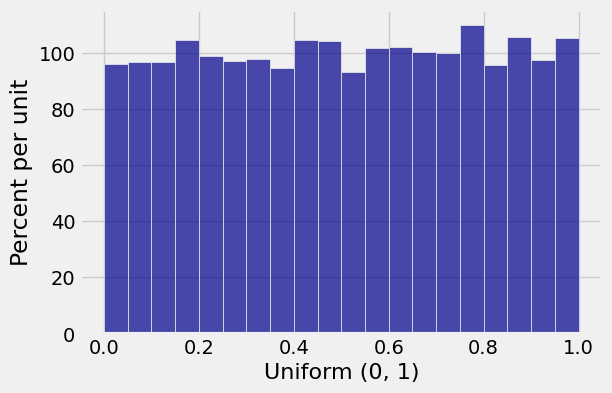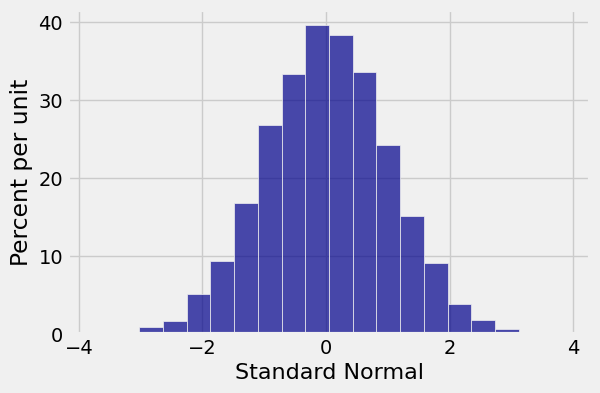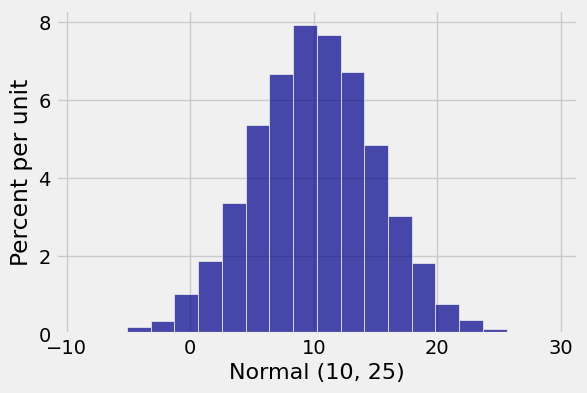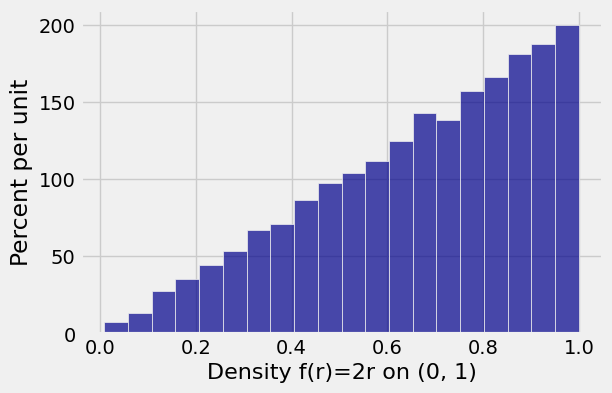16.3. Simulation via the CDF#
How do you generate a random variable that has a specified distribution? The answer is quite remarkable and is used by computational systems to generate values of random variables whose distribution you have specified.
Our goal is to generate a value of a random variable that has a particular distribution. Let
The statement below describes the process. Note that because we have assumed
Generate
Create a random variable
Done! The random variable
To prove the result, remember that the cdf
This is an extremely important result for computation as well as theory. It says that computing systems should pay great attention to the quality of their uniform
For example, here is a way to generate a normal
Start with
By our result above,
By linear transformation facts,
Here is the plan in action, in the case stats.uniform.rvs generates uniform size specifies how many numbers to generate.
uniforms = stats.uniform.rvs(size=10000)
standard_normals = stats.norm.ppf(uniforms)
normal_10_25 = 5*standard_normals + 10
results = Table().with_columns(
'Uniform (0, 1)', uniforms,
'Standard Normal', standard_normals,
'Normal (10, 25)', normal_10_25
)
results.hist('Uniform (0, 1)', bins=20)

results.hist('Standard Normal', bins=20)

results.hist('Normal (10, 25)', bins=20)

You can repeat the process for any distribution you want to simulate.
For example, to generate random variables whose density is
Then find the inverse of
For
Then apply
Here is the plan in action, using the uniform random numbers generated above.
results = results.with_columns(
'Density f(r)=2r on (0, 1)', uniforms ** 0.5
)
results.hist('Density f(r)=2r on (0, 1)', bins=20)


